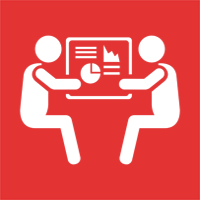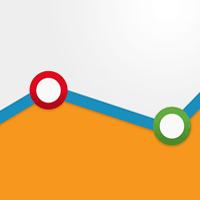Graduating to Advanced Analytics

by Pete Prestipino
27 Nov, 2017
When it comes to analytics, the closer you look the scarier and more uncomfortable it often becomes.
It's only through this digital discomfort and fear of the unknown however that it is possible to identity the root causes of growth or decline.
It is still absolutely necessary to track all of the basic Website performance metrics today. Understanding where visitors are coming from and what they do when they are there provides an opportunity to figure out which efforts are rewarding and which are not. It's important not to lose focus on this.
article continues below...

At some point, however, you'll want to (or be forced to) move on toward some advanced form of analysis to find the answers you seek, the answers to your enterprise's most pressing problems and concerns.
This is particularly true if the aim is to better understand patterns and predict future outcomes; which, of course, it most certainly should be - there's just no way to move up in the digital world without doing so.
Depending on the size of your enterprise, of course, the "numbers" required for this level or degree of business analysis can quickly become overwhelming.
Not only are you analyzing the performance of a website and its users, but now you're exploring data related to products, shipping, support, advertising, marketing, sales, IT and more, to figure out why something happened or what's about to happen next.
An advanced level of analytics such as this provides insight into bigger picture activity - both internal and external forces - and has the potential to positively influence success metrics. So, what insights can you extract and expect?
The list is almost endless; the seasonality of products can be discovered, the popularity of a particular category, even a company's sensitivity to competitive and even economic activity and trends.
Graduating to an advanced level of digital analytics is really just about bringing together every possible source of data possible, organizing it in a way that reveals some useful (data-driven) insight, and providing a recommendation to correct or commend those practices and practitioners responsible.
Products like PowerBi from Microsoft, Tableau, Domo, Klipfolio, Metabase, Redash, Looker, and even Google Data Studio provide a strong introduction to what an advanced form of analytics at your enterprise might look like as each provides an opportunity to ask questions and learn from data. These platforms make it possible to import your own data (e.g., on users) and view it in context of other data - that's how you engage in advanced analytics.
Say, for example, that an online retailer wants to understand more about the connection between Amazon sales volume and cost of customer support on various channels including social media, a support ticket system or over the phone. Engaging in an advanced form of analytics such as this provides the retailer an opportunity to understand their most expensive support channel and work toward optimizing or eliminating it for the benefit of the user experience and the business itself.
What these solutions provide is really just an easier way to bring data together and make sense of it in the context of your enterprise and its operations. You could theoretically undertake the exact same initiative without a formal solution like those listed, but you could also do the same thing (data analysis and data modeling) on your own with Excel, Power Pivot (included natively in Excel 2016) and some free time.
As someone interested in moving toward an advanced degree in the digital media arts, these offerings provide a simple way to get started on the path toward working with data in a more productive way.
It's only through this digital discomfort and fear of the unknown however that it is possible to identity the root causes of growth or decline.
It is still absolutely necessary to track all of the basic Website performance metrics today. Understanding where visitors are coming from and what they do when they are there provides an opportunity to figure out which efforts are rewarding and which are not. It's important not to lose focus on this.
article continues below...

At some point, however, you'll want to (or be forced to) move on toward some advanced form of analysis to find the answers you seek, the answers to your enterprise's most pressing problems and concerns.
This is particularly true if the aim is to better understand patterns and predict future outcomes; which, of course, it most certainly should be - there's just no way to move up in the digital world without doing so.
Depending on the size of your enterprise, of course, the "numbers" required for this level or degree of business analysis can quickly become overwhelming.
Not only are you analyzing the performance of a website and its users, but now you're exploring data related to products, shipping, support, advertising, marketing, sales, IT and more, to figure out why something happened or what's about to happen next.
An advanced level of analytics such as this provides insight into bigger picture activity - both internal and external forces - and has the potential to positively influence success metrics. So, what insights can you extract and expect?
The list is almost endless; the seasonality of products can be discovered, the popularity of a particular category, even a company's sensitivity to competitive and even economic activity and trends.
Graduating to an advanced level of digital analytics is really just about bringing together every possible source of data possible, organizing it in a way that reveals some useful (data-driven) insight, and providing a recommendation to correct or commend those practices and practitioners responsible.
Products like PowerBi from Microsoft, Tableau, Domo, Klipfolio, Metabase, Redash, Looker, and even Google Data Studio provide a strong introduction to what an advanced form of analytics at your enterprise might look like as each provides an opportunity to ask questions and learn from data. These platforms make it possible to import your own data (e.g., on users) and view it in context of other data - that's how you engage in advanced analytics.
Say, for example, that an online retailer wants to understand more about the connection between Amazon sales volume and cost of customer support on various channels including social media, a support ticket system or over the phone. Engaging in an advanced form of analytics such as this provides the retailer an opportunity to understand their most expensive support channel and work toward optimizing or eliminating it for the benefit of the user experience and the business itself.
What these solutions provide is really just an easier way to bring data together and make sense of it in the context of your enterprise and its operations. You could theoretically undertake the exact same initiative without a formal solution like those listed, but you could also do the same thing (data analysis and data modeling) on your own with Excel, Power Pivot (included natively in Excel 2016) and some free time.
As someone interested in moving toward an advanced degree in the digital media arts, these offerings provide a simple way to get started on the path toward working with data in a more productive way.

Pete Prestipino
Digital marketing executive with proven experience in all aspects of search engine optimization (SEO), performance-based advertising, consumer-generated/social media, email marketing, lead generation, Web design, usability, and analytics. - 20-year Internet marketing veteran, currently serving as the Digital Marketing Campaign Manager at Antenna Group (formerly Chicago Digital). - Former Editor-In-Chief of Website Magazine, and a regular speaker on Web technology digital marketing strategy - Author of several books on digital marketing Including Web 360: The Fundamentals of Web Success; Affiliate 360: The Fundamentals of Performance Marketing; Domains 360: The Fundamentals of Buying & Selling Domain Names, and SEO 360: The Fundamentals of Search Engine Optimization.









